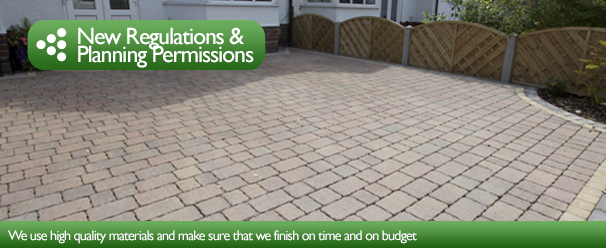

Permeable Paving
Serious flooding in 2007 affected the UK. This resulted in loss of life, disruption of peoples’ lives and caused damage estimated at about £3bn. In many cases the flooding happened because drains could not cope with the amount of rain water flowing to them. The effects of climate change mean that this kind of heavy rainfall event (and subsequent flooding) may occur more often in the future.
The drains in most urban areas were built many years ago and were not designed to cope with increased rainfall. Paving front gardens further adds to the problem. Although paving over one or two gardens may not seem to make a difference, the combined effect of lots of people in a street or area doing this can increase the risk of flooding.
The harm caused by paving gardens is not limited to just flooding. Hard surfaces such as concrete and asphalt collect pollution (oil, petrol, brake dust etc) that is washed off into the drains. Many drains carry rainwater directly to streams or rivers where the pollution damages wildlife and the wider environment. In older areas the rainwater may go into the foul water sewer which normally takes household waste from bathrooms and kitchens to the sewage treatment works. These overflow into streams and rivers in heavy rainfall. As more water runs into foul sewers from paved areas there are more frequent overflows, passing untreated sewage into watercourses.
Replacing grass and plant beds with concrete and asphalt surfaces means that water does not soak into the ground. This reduces the amount that reaches our natural underground aquifers. Some water that soaks into the ground will evaporate back into the air, causing a cooling effect around the house. This is lost if the garden is covered with hard impermeable surfaces and can cause local temperatures to rise (often referred to as the urban heat island effect).
Download the Guide to Legislation here


